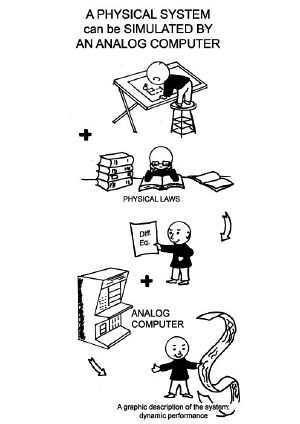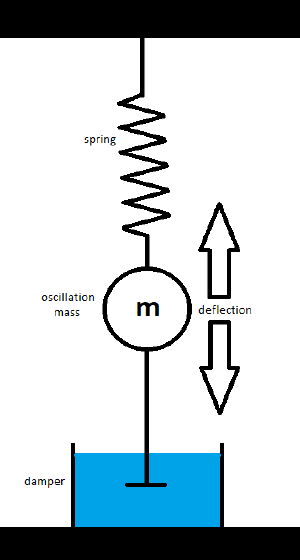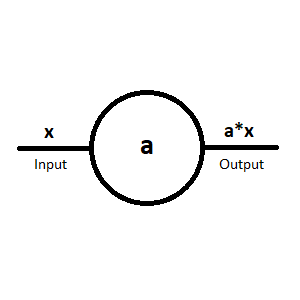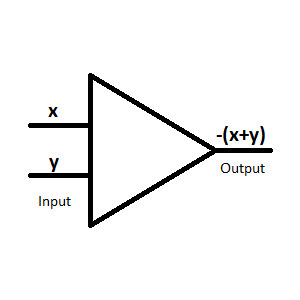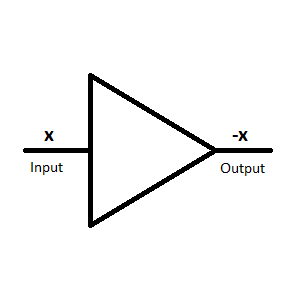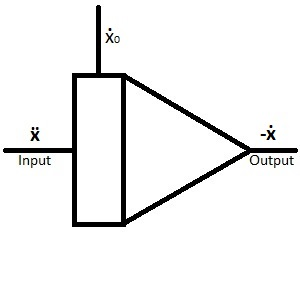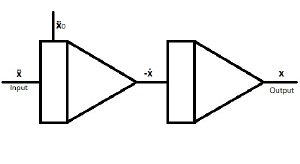Difference between revisions of "Damped oscillation"
Max Peschke (talk | contribs) |
Max Peschke (talk | contribs) |
||
| Line 61: | Line 61: | ||
[[File:DO Inverter01.png|thumb|300px|Basic Inverter Scheme]] | [[File:DO Inverter01.png|thumb|300px|Basic Inverter Scheme]] | ||
|- | |- | ||
| − | | '''The integrator''', the input (or inputs) can be found on the left and the output on the right. Coming from above you find '''ẍ<sub>0</sub>''', which represents the starting condition of the integrator and can be thought of as the integration constant. | + | | '''The integrator''', the input (or inputs) can be found on the left and the output on the right. |
| + | |||
| + | Coming from above you find '''ẍ<sub>0</sub>''', which represents the starting condition of the integrator (often referred to initial condition) and can be thought of as the integration constant. When there is no initial condition drawn in the circuit, it is set to 0. | ||
'''Note: Due to technical reasons the output of an integrator is negated! ẍ -->-ẋ''' | '''Note: Due to technical reasons the output of an integrator is negated! ẍ -->-ẋ''' | ||
| Line 69: | Line 71: | ||
|} | |} | ||
| − | With these basic computing elements we are able to generate '''ẍ = -(d*ẋ + k*x) / m''' | + | With these basic computing elements we are able to generate '''ẍ = -(d*ẋ + k*x) / m'''. |
| + | |||
| + | The basic idea is to '''start with an integrator assuming ẍ as it´s input.''' | ||
{| class="wikitable" | {| class="wikitable" | ||
| Line 75: | Line 79: | ||
|- | |- | ||
! Description !! Circuit | ! Description !! Circuit | ||
| + | |- | ||
| + | |As mentioned above, start with an integrator and assume the highest derivative as input. | ||
| + | |||
| + | '''ẍ''' represents the deflection over time. If '''ẍ<sub>0</sub>''' is set to 1, the damped oscillation starts with maximum deflection. | ||
| + | ||[[File:IntegratorSymbol.png|thumb|300px|Generating all derivatives]] | ||
|- | |- | ||
| When putting two integrators together, you can generate '''ẋ''' and '''x''' || [[File:TwoIntegrators.png|thumb|300px|Generating all derivatives]] | | When putting two integrators together, you can generate '''ẋ''' and '''x''' || [[File:TwoIntegrators.png|thumb|300px|Generating all derivatives]] | ||
Revision as of 16:31, 7 December 2021
The modeling of a damped oscillation is a good starting point for analog programming beginners. This article shall give a detailed explanation how to implement a simulation on The Analog Thing using the full repatriation method to derive a computer circuit (originally developed by Lord Kelvin around 1875) and to get results on an oscilloscope.
There are four major steps, all of which are equally crucial:
- Describe the to be simulated system with differential equations
- Derive a computer circuit from these equations
- Wire the computer circuit on the analog computer and adjust parameters
- Choose viable visualization method (usually oscilloscopes) and connect the computer circuit
This article will focus on point 2. to 4. and requires a basic understanding of differential equations.
1. Mathematical description of a damped oscillation
The first and often hardest step of modeling a to be simulated system on an analog computer is to give an exact mathematical description of the system in the form of differential equations. For this example the description is rather short:
Find all acting forces, three in this case:
- Spring force Fs = k*x;
k = spring coefficient, x = deflection
- Inertia force Fm = m*a;
m = mass, a = acceleration
- Damper force Fd = d*v;
d = damper coefficient, v = velocity
Set the sum of all forces to zero (definition of an isolated system):
Fm + Fd + Fs = 0 m*a + d*v + k*x = 0
Replace the velocity v with ẋ and the acceleration a with ẍ
v = ẋ
(the velocity equals the first derivative of x)
a = ẍ
(the acceleration equals the second derivative of x)
m*a + d*v + k*x
= m*ẍ + d*ẋ + k*x = 0
Now we have an exact description the damped oscillation in the form of a differential equation.
Lastly, solve this equation for the highest derivative the finish the full repatriation:
-> ẍ = -(d*ẋ + k*x) / m
2. Derivation of a computer circuit
At first, we need three basic computing elements which can probably be found on every electrical analog computer:
| Description | Circuit |
|---|---|
| The coefficient potentiometer, which is used to to multiply an input x with the factor a so a*x is generated.
Note: a can only accept values between 0 and 1! Can also be used as dividing factor so a/x is generated. |
|
| The inverter // summer, the input (or inputs) can be found on the left and the output on the right.
Note: Due to technical reasons the output of a summer is negated! x+y --> -(x+y) At the basis of the output inversion a summer with one input functions as inverter and therefore the summer and the inverter share the same circuit symbol. |
|
| The integrator, the input (or inputs) can be found on the left and the output on the right.
Coming from above you find ẍ0, which represents the starting condition of the integrator (often referred to initial condition) and can be thought of as the integration constant. When there is no initial condition drawn in the circuit, it is set to 0. Note: Due to technical reasons the output of an integrator is negated! ẍ -->-ẋ Electrical analog integrators can only integrate over time. |
With these basic computing elements we are able to generate ẍ = -(d*ẋ + k*x) / m.
The basic idea is to start with an integrator assuming ẍ as it´s input.
| Description | Circuit |
|---|---|
| As mentioned above, start with an integrator and assume the highest derivative as input.
ẍ represents the deflection over time. If ẍ0 is set to 1, the damped oscillation starts with maximum deflection. |
|
| When putting two integrators together, you can generate ẋ and x | |
| Example | Example |
| Example | Example |
| Example | Example |
